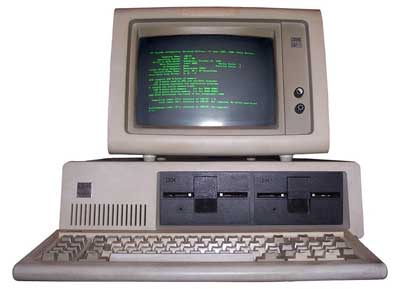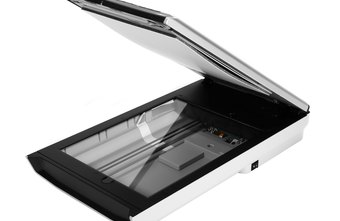First Generation Of Computer (1946-1959) :
 It was a first computer which used used vacuum tubes for circuitry and magnetic drums for memory, and were often enormous, taking up entire rooms. It use 18000 vacuum tubes. IT was developed by two scientists Mauchly and Echert at the Census Department of United States. Examples of First Generation of computers are ENIAC and UNIVAC-1.
It was a first computer which used used vacuum tubes for circuitry and magnetic drums for memory, and were often enormous, taking up entire rooms. It use 18000 vacuum tubes. IT was developed by two scientists Mauchly and Echert at the Census Department of United States. Examples of First Generation of computers are ENIAC and UNIVAC-1.
ADVANTAGES :
1. Vacuum tube technology made possible to make electronic digital computers.
2. These computers could calculate data in millisecond.
DISADVANTAGES :
1. This Computer is very large in size.
2. This were not very reliable.
3. Air conditioning was required.
4. They Consumed a large amount of energy.
5. Non-Portable.
6. Very slow speed.
7. Used punch cards for input.
8. Used Machine language only.
9. They produced too much heat and energy.
Second Generation Of Computer (1959-1965) :
It used transistors. The scientists at Bell laboratories developed transistors in 1947. These scientists include John Barden, William Brattain and William Shockley. The size of the computers was decresed by replacing vacuum tubes with transistors. The examples of Second Generation of computers are IBM 7094 series, IBM 1400 series and CDC 164 etc.
ADVANTAGES :
1. Smaller in size as compared to the first generation computers.
2. This generation of computers were more reliable.
3. Better portability as compared to the first generation computers.
4. Better speed and could calculate data in microseconds.
DISADVANTAGES :
1. Costly and not versatile.
2. Only used for specific purposes.
3. Constant maintenance was required.
Third Generation Of Computer (1965-1971) :
It used Integrated Circuit(IC's) in place of transistors. The IC was invented by Jack Kilby. This development made computer smaller in size, reliable and efficient. In this generation remote processing, time-sharing, multi-programming operating system were used. High-level languages (FORTRAN-II TO IV, COBOL, PASCAL PL/1, BASIC, ALGOL-68 etc.) were used during this generation.
ADVANTAGES :
1. Smaller in size as compared to the previous computers.
2. They were more reliable.
3. Used less energy.
4. Maintenance cost was low because hardware failure is rear.
5. Less expensive.
6. Used mouse and keyboard for input.
DISADVANTAGES :
1. Air conditioning was required.
2. The latest technology required for the manufacturing of IC chips.
Four Generation Of Computer (1971-1980) :
It was the extension of third generation of technology. It emerged with development of the VLSI (Very Large Scale Integration) with the help of VLSI technology microprocessor came into existence. The computers were designed by using microprocessor, as thousands of integrated circuits were built onto a single silicon chip. It became more powerful and reliable.
ADVANTAGES :
1. Smaller in size as compared to the previous generations.
2. More powerful and reliable than previous generation.
3. No air conditioning required.
4. Cheapest among all generations.
5. Totally general purpose.
6. Less need to repair the computers.
DISADVANTAGES :
1. The latest technology required for manufacturing of microprocessor.
Fifth Generation Of Computer (1980-Onwards) :
Fifth generation of computers are in developmental stage which is based on Artificial Intelligence (AI). These computeres were developed by Japan's Ministry of International Trade and Industry in 1982. Computers can understand spoken words & imitate human reasoning. Scientists are constantly working to increase the processing power of computers. They are trying to create a computer with real IQ with the help of advanced programming and technologies. So we can say that the 5th Generation computers will have the power of human Intelligence.
ADVANTAGES :
1. Smaller in size
2. More powerful, reliable and easy to handle.
3. VLSI (Very Large Scale Integration) is replaced by ULSI (Ultra Large Scale Integration).
4. It is more updated, clean and easy to use.
5. Having capabilities of parallel processing.
5. Having extra high processing speed.
6. Wireless facility is provided.
DISADVANTAGES :
1. If computers have their own brain then they can harm humans.
 It was a first computer which used used vacuum tubes for circuitry and magnetic drums for memory, and were often enormous, taking up entire rooms. It use 18000 vacuum tubes. IT was developed by two scientists Mauchly and Echert at the Census Department of United States. Examples of First Generation of computers are ENIAC and UNIVAC-1.
It was a first computer which used used vacuum tubes for circuitry and magnetic drums for memory, and were often enormous, taking up entire rooms. It use 18000 vacuum tubes. IT was developed by two scientists Mauchly and Echert at the Census Department of United States. Examples of First Generation of computers are ENIAC and UNIVAC-1.ADVANTAGES :
1. Vacuum tube technology made possible to make electronic digital computers.
2. These computers could calculate data in millisecond.
DISADVANTAGES :
1. This Computer is very large in size.
2. This were not very reliable.
3. Air conditioning was required.
4. They Consumed a large amount of energy.
5. Non-Portable.
6. Very slow speed.
7. Used punch cards for input.
8. Used Machine language only.
9. They produced too much heat and energy.
Second Generation Of Computer (1959-1965) :
It used transistors. The scientists at Bell laboratories developed transistors in 1947. These scientists include John Barden, William Brattain and William Shockley. The size of the computers was decresed by replacing vacuum tubes with transistors. The examples of Second Generation of computers are IBM 7094 series, IBM 1400 series and CDC 164 etc.
ADVANTAGES :
1. Smaller in size as compared to the first generation computers.
2. This generation of computers were more reliable.
3. Better portability as compared to the first generation computers.
4. Better speed and could calculate data in microseconds.
DISADVANTAGES :
1. Costly and not versatile.
2. Only used for specific purposes.
3. Constant maintenance was required.
Third Generation Of Computer (1965-1971) :
It used Integrated Circuit(IC's) in place of transistors. The IC was invented by Jack Kilby. This development made computer smaller in size, reliable and efficient. In this generation remote processing, time-sharing, multi-programming operating system were used. High-level languages (FORTRAN-II TO IV, COBOL, PASCAL PL/1, BASIC, ALGOL-68 etc.) were used during this generation.
ADVANTAGES :
1. Smaller in size as compared to the previous computers.
2. They were more reliable.
3. Used less energy.
4. Maintenance cost was low because hardware failure is rear.
5. Less expensive.
6. Used mouse and keyboard for input.
DISADVANTAGES :
1. Air conditioning was required.
2. The latest technology required for the manufacturing of IC chips.
Four Generation Of Computer (1971-1980) :
It was the extension of third generation of technology. It emerged with development of the VLSI (Very Large Scale Integration) with the help of VLSI technology microprocessor came into existence. The computers were designed by using microprocessor, as thousands of integrated circuits were built onto a single silicon chip. It became more powerful and reliable.
ADVANTAGES :
1. Smaller in size as compared to the previous generations.
2. More powerful and reliable than previous generation.
3. No air conditioning required.
4. Cheapest among all generations.
5. Totally general purpose.
6. Less need to repair the computers.
DISADVANTAGES :
1. The latest technology required for manufacturing of microprocessor.
Fifth Generation Of Computer (1980-Onwards) :
Fifth generation of computers are in developmental stage which is based on Artificial Intelligence (AI). These computeres were developed by Japan's Ministry of International Trade and Industry in 1982. Computers can understand spoken words & imitate human reasoning. Scientists are constantly working to increase the processing power of computers. They are trying to create a computer with real IQ with the help of advanced programming and technologies. So we can say that the 5th Generation computers will have the power of human Intelligence.
ADVANTAGES :
1. Smaller in size
2. More powerful, reliable and easy to handle.
3. VLSI (Very Large Scale Integration) is replaced by ULSI (Ultra Large Scale Integration).
4. It is more updated, clean and easy to use.
5. Having capabilities of parallel processing.
5. Having extra high processing speed.
6. Wireless facility is provided.
DISADVANTAGES :
1. If computers have their own brain then they can harm humans.




0 comments:
Post a Comment